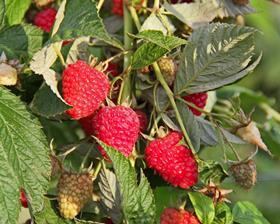
Three new raspberry varieties developed by Chilean breeders are generating strong interest among the country’s producers.
The varieties – Santa Teresa, Santa Catalina and Santa Clara – were produced by Chile’s Fruit Technology Consortium (CTF) in conjunction with the Faculty of Agricutlure and Forestry at the Catholic University of Chile.
Producers in the V, VII and VIII regions have acquired around 100,000 plants to date, according to CTF’s general manager Sergio Maureira.
“The varieties are achieving excellent results and orders for next season have already reached 300,000 plants,” Maureira said.
Germán Sims of Agrícola y Frutícola Quihua said the company plans to increase its planted area from 4ha to 15ha next season due to the positive results achieved and evently hopes to have 40ha under production.
“We have been growing raspberries for 24 years and we urgently needed to convert our production from older varieties to newer ones,” Sims said. “We originally planned to import these from the US, but decided to give the CTF varieties a chance and have been very pleased with the results.”
Santa Catalina and Santa Clara are described as high-yielding early season primocane varieties that can produce double the yield in their first year than the widely planted Heritage variety. They produce an average berry size with a brix of 10.10 o and 10.13 o respectively
Santa Teresa is another early season high-yielding primocane but produces a larger berry size and has a slightly lower brix level.
The varieties are also being rolled out in Europe following an agreement signed between CTF and Spanish soft fruit grower-exporter Masiá Ciscar to develop its raspberry varieties in the Iberian Peninsula.



